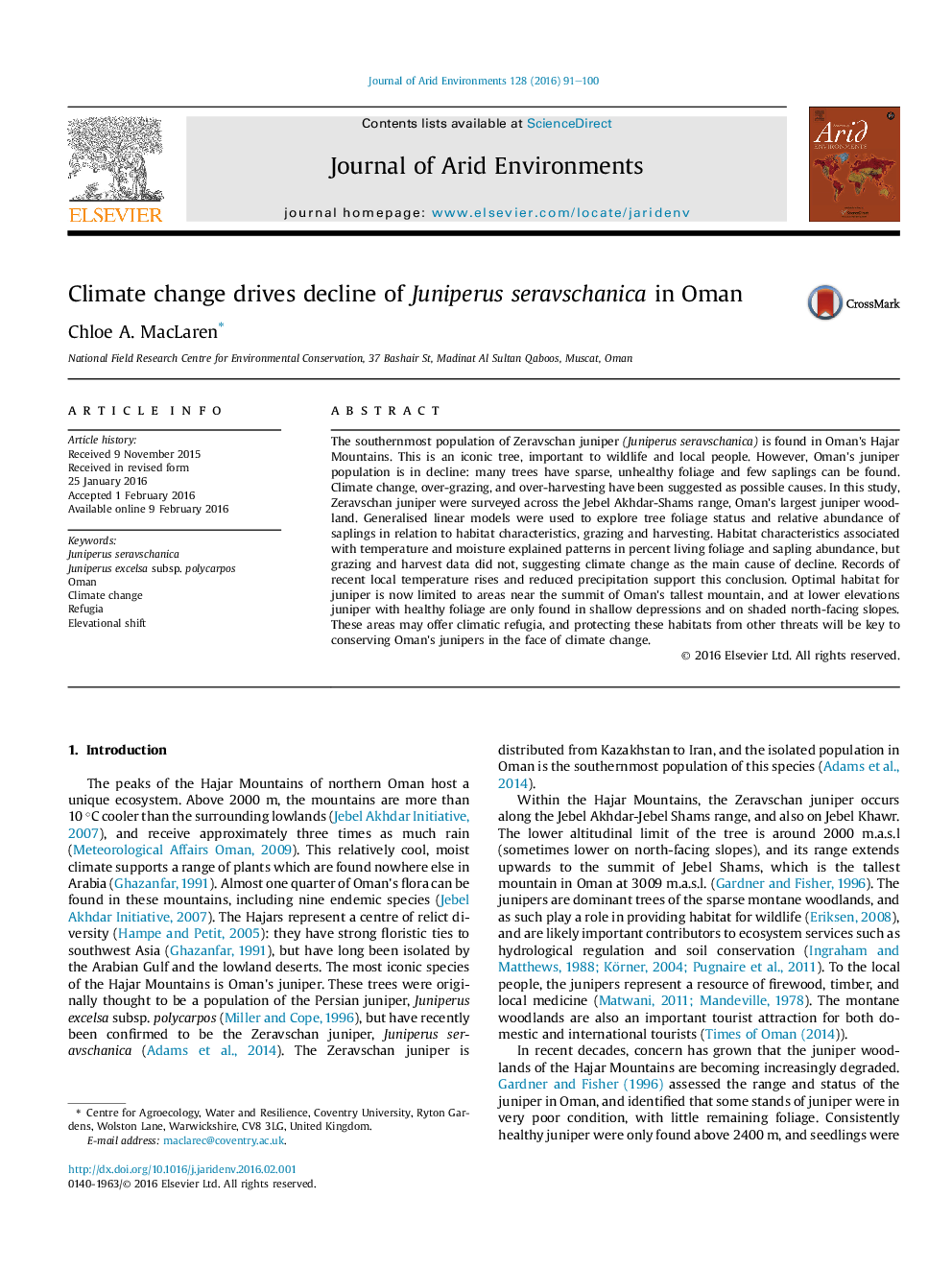| Article ID | Journal | Published Year | Pages | File Type |
|---|---|---|---|---|
| 4392771 | Journal of Arid Environments | 2016 | 10 Pages |
•The cause of decline of a relict Zeravschan juniper population in Oman was assessed.•Trees in better condition and more saplings were found in cooler, wetter habitats.•Climate change was identified as the main cause of decline.•The Zeravschan juniper in Oman appears to be undergoing an upward altitudinal shift.•Topographical ‘bowls’ provide climatic refugia to Zeravschan juniper in Oman.
The southernmost population of Zeravschan juniper (Juniperus seravschanica) is found in Oman's Hajar Mountains. This is an iconic tree, important to wildlife and local people. However, Oman's juniper population is in decline: many trees have sparse, unhealthy foliage and few saplings can be found. Climate change, over-grazing, and over-harvesting have been suggested as possible causes. In this study, Zeravschan juniper were surveyed across the Jebel Akhdar-Shams range, Oman's largest juniper woodland. Generalised linear models were used to explore tree foliage status and relative abundance of saplings in relation to habitat characteristics, grazing and harvesting. Habitat characteristics associated with temperature and moisture explained patterns in percent living foliage and sapling abundance, but grazing and harvest data did not, suggesting climate change as the main cause of decline. Records of recent local temperature rises and reduced precipitation support this conclusion. Optimal habitat for juniper is now limited to areas near the summit of Oman's tallest mountain, and at lower elevations juniper with healthy foliage are only found in shallow depressions and on shaded north-facing slopes. These areas may offer climatic refugia, and protecting these habitats from other threats will be key to conserving Oman's junipers in the face of climate change.
